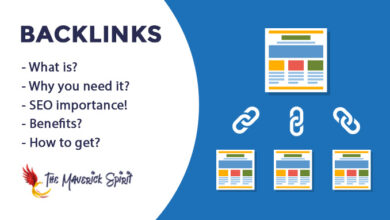The Importance of Industrial Design Models in Product Development

Industrial design models play a crucial role in the product development process. They are physical representations or digital renderings of a product design that allow designers and engineers to visualize, test, and refine their ideas before moving forward with production.
These models serve as a bridge between concept and reality, helping to identify potential issues, improve functionality, and enhance user experience.
In this article, we will explore the importance of industrial design models in product development and how they contribute to the success of a product.
1. Visualization and Communication
One of the primary purposes of industrial design models is to visualize and communicate design concepts.
Designers can use various techniques such as sketches, 3D computer models, or physical prototypes to bring their ideas to life. This allows them to effectively communicate their vision to stakeholders, clients, and team members.
An industrial design model is the embodiment of creativity and careful planning, offering a tactile experience for designers and stakeholders to assess concepts before production.
Sketches are often the initial step in the design process, providing a quick and easy way to capture and communicate ideas.
These rough drawings can be used to explore different possibilities and iterate on the design. Once a concept is refined, designers can then move on to creating 3D computer models.
These digital representations can be manipulated and viewed from different angles, providing a more realistic and detailed visualization of the design.
With the help of software tools, designers can add textures, colors, and even simulate lighting effects to further enhance the realism of the model. Physical prototypes are another valuable tool in industrial design.
2. Iterative Design and Rapid Prototyping
Industrial design models facilitate an iterative design process where designers can quickly create, test, and refine their ideas. By creating multiple design iterations, designers can explore different concepts, evaluate their feasibility, and identify areas for improvement. Industrial design models play a crucial role in the iterative design process.
They allow designers to swiftly bring their ideas to life, test them, and make necessary refinements. Through the creation of multiple design iterations, designers are able to delve into various concepts, assess their practicality, and pinpoint areas that require enhancement.
These models act as tangible prototypes that enable designers to visually and physically interact with their designs, gaining valuable insights and feedback.
By incorporating this iterative approach, industrial designers can optimize their creations, ensuring functionality, aesthetics, and user experience are all thoroughly examined and refined.
3. User Testing and Feedback
Industrial design models are invaluable tools for user testing and gathering feedback. By creating physical or digital models that closely resemble the final product, designers can conduct usability tests and gather valuable insights from potential users. Industrial design models serve as invaluable tools for user testing and collecting feedback.
These models, whether they are physical or digital, closely resemble the final product and enable designers to conduct usability tests and gather valuable insights from potential users. By creating these models, designers can simulate the user experience and identify any potential issues or areas for improvement before the product is mass-produced.
This allows them to make necessary adjustments and refinements to enhance the product’s usability, functionality, and overall user satisfaction.
Additionally, these models provide a tangible representation of the design concept, making it easier for users to provide specific feedback and suggestions.
Overall, industrial design models play a crucial role in the iterative design process, ensuring that the final product meets the needs and expectations of its intended users.
4. Cost and Time Optimization
Industrial design models help optimize both the cost and time aspects of product development. By identifying design issues early on, designers can avoid costly rework and modifications during the later stages of production.
Industrial design models play a crucial role in streamlining the product development process by optimizing both the cost and time aspects.
These models enable designers to identify any potential design issues at an early stage, allowing them to make necessary adjustments and avoid costly rework or modifications during the later stages of production. By using industrial design models, designers can visualize and test different concepts and ideas before committing to a final design.
This helps them to identify any flaws or limitations in the initial design, allowing for improvements and adjustments to be made early on.
5. Intellectual Property Protection
Industrial design models are essential for protecting intellectual property rights. By creating physical or digital representations of their designs, designers can establish proof of their original work and file for design patents or trademarks.
Industrial design models serve as tangible evidence of a designer’s original work and play a crucial role in protecting their intellectual property rights. These models can be created in either physical or digital form, providing a concrete representation of the design concept.
By having a physical model, designers can clearly demonstrate the uniqueness and novelty of their designs. This physical representation allows them to showcase their creative ideas and establish proof of their original work. It becomes a valuable asset in legal proceedings, as it can be presented as evidence to support their claim of ownership.
Similarly, digital models also serve as an effective means of protecting intellectual property rights.
Conclusion
Industrial design models are an integral part of the product development process. They help visualize and communicate design concepts, facilitate iterative design and rapid prototyping, enable user testing and feedback, optimize cost and time, and protect intellectual property rights. By leveraging the power of industrial design models, companies can develop innovative and successful products that meet user needs and stand out in the market.



